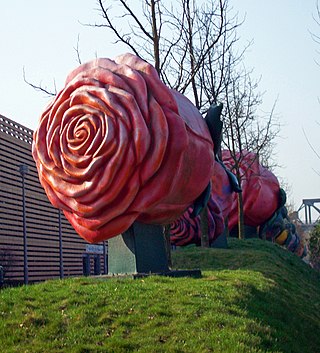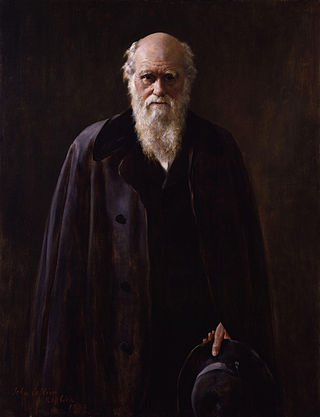
A copyright is a type of intellectual property that gives the creator of an original work, or another right holder, the exclusive and legally secured right to copy, distribute, adapt, display, and perform a creative work, usually for a limited time. The creative work may be in a literary, artistic, educational, or musical form. Copyright is intended to protect the original expression of an idea in the form of a creative work, but not the idea itself. A copyright is subject to limitations based on public interest considerations, such as the fair use doctrine in the United States.

"Happy Birthday to You", or simply "Happy Birthday", is a song traditionally sung to celebrate a person's birthday. According to the 1998 Guinness World Records, it is the most recognized song in the English language, followed by "For He's a Jolly Good Fellow". The song's base lyrics have been translated into at least 18 languages. The melody of "Happy Birthday to You" comes from the song "Good Morning to All", which has traditionally been attributed to American sisters Patty and Mildred J. Hill in 1893, although the claim that the sisters composed the tune is disputed.

A Creative Commons (CC) license is one of several public copyright licenses that enable the free distribution of an otherwise copyrighted "work". A CC license is used when an author wants to give other people the right to share, use, and build upon a work that the author has created. CC provides an author flexibility and protects the people who use or redistribute an author's work from concerns of copyright infringement as long as they abide by the conditions that are specified in the license by which the author distributes the work.
Getty Images Holdings, Inc. is a visual media company and supplier of stock images, editorial photography, video, and music for business and consumers, with a library of over 477 million assets. It targets three markets—creative professionals, the media, and corporate.
Reproduction fees are charged by image collections for the right to reproduce images in publications. This is not the same as a copyright fee, but is charged separately, as is the cost of the provision of the image. It can be charged where an image is out of copyright, and reflects the possession of the image by a collection.
The Bridgeman Art Library, based in New York, London, Paris and Berlin, provides one of the largest archives for reproductions of works of art in the world. Founded in 1972 by Harriet Bridgeman, the Bridgeman Art Library cooperates with many art galleries and museums to gather images and footage for licensing.
The threshold of originality is a concept in copyright law that is used to assess whether a particular work can be copyrighted. It is used to distinguish works that are sufficiently original to warrant copyright protection from those that are not. In this context, "originality" refers to "coming from someone as the originator/author", rather than "never having occurred or existed before".

Open Library is an online project intended to create "one web page for every book ever published". Created by Aaron Swartz, Brewster Kahle, Alexis Rossi, Anand Chitipothu, and Rebecca Malamud, Open Library is a project of the Internet Archive, a nonprofit organization. It has been funded in part by grants from the California State Library and the Kahle/Austin Foundation. Open Library provides online digital copies in multiple formats, created from images of many public domain, out-of-print, and in-print books.
In Germany, photo rights or "Bildrechte" are the copyrights that are attached to the "author" of the photograph and are specified in the "Law for Copyright and similar Protection". These rights deal with rights of reproduction, distribution, modification, attribution, and prohibitions against illegal modification or reproduction. The ownership rights of a picture are treated under the broader "art copyright laws". Furthermore, if a museum or gallery owns a work of art or a photograph, they are permitted to make their own stipulations as to the selling of illustrations and reproductions of their property. This relates to the German legal concept of the right of owner to undisturbed possession. Wolf Vostell said: "Copyrights are like human rights".

Sweat of the brow is a copyright law doctrine. According to this doctrine, an author gains rights through simple diligence during the creation of a work, such as a database, or a directory. Substantial creativity or "originality" is not required.

Freedom of panorama (FOP) is a provision in the copyright laws of various jurisdictions that permits taking photographs and video footage and creating other images of buildings and sometimes sculptures and other art works which are permanently located in a public place, without infringing on any copyright that may otherwise subsist in such works, and the publishing of such images. Panorama freedom statutes or case law limit the right of the copyright owner to take action for breach of copyright against the creators and distributors of such images. It is an exception to the normal rule that the copyright owner has the exclusive right to authorize the creation and distribution of derivative works.
Crown copyright is a type of copyright protection. It subsists in works of the governments of some Commonwealth realms and provides special copyright rules for the Crown, i.e. government departments and (generally) state entities. Each Commonwealth realm has its own Crown copyright regulations. There are therefore no common regulations that apply to all or a number of those countries. There are some considerations being made in Canada, UK, Australia and New Zealand regarding the "reuse of Crown-copyrighted material, through new licences".

Bridgeman Art Library v. Corel Corp., 36 F. Supp. 2d 191, was a decision by the United States District Court for the Southern District of New York, which ruled that exact photographic copies of public domain images could not be protected by copyright in the United States because the copies lack originality. Even though accurate reproductions might require a great deal of skill, experience, and effort, the key element to determine whether a work is copyrightable under US law is originality.

In copyright law, a derivative work is an expressive creation that includes major copyrightable elements of a first, previously created original work. The derivative work becomes a second, separate work independent from the first. The transformation, modification or adaptation of the work must be substantial and bear its author's personality sufficiently to be original and thus protected by copyright. Translations, cinematic adaptations and musical arrangements are common types of derivative works.

The public domain (PD) consists of all the creative work to which no exclusive intellectual property rights apply. Those rights may have expired, been forfeited, expressly waived, or may be inapplicable. Because no one holds the exclusive rights, anyone can legally use or reference those works without permission.
The copyright law of the United States grants monopoly protection for "original works of authorship". With the stated purpose to promote art and culture, copyright law assigns a set of exclusive rights to authors: to make and sell copies of their works, to create derivative works, and to perform or display their works publicly. These exclusive rights are subject to a time and generally expire 70 years after the author's death or 95 years after publication. In the United States, works published before January 1, 1929, are in the public domain.

In July 2009, lawyers representing the National Portrait Gallery of London (NPG) sent an email letter warning of possible legal action for alleged copyright infringement to Derrick Coetzee, an editor/administrator of the free content multimedia repository Wikimedia Commons, hosted by the Wikimedia Foundation.

A copyright troll is a party that enforces copyrights it owns for purposes of making money through strategic litigation, in a manner considered unduly aggressive or opportunistic, sometimes without producing or licensing the works it owns for paid distribution. Critics object to the activity because they believe it does not encourage the production of creative works, but instead makes money through the inequities and unintended consequences of high statutory damages provisions in copyright laws intended to encourage creation of such works.

Bill Graham Archives v. Dorling Kindersley, Ltd., 448 F.3d 605, is a 2006 case of the United States Court of Appeals for the Second Circuit regarding fair use of images in a pictorial history text. It affirmed the United States District Court for the Southern District of New York, which held at trial that the publisher's use of several images of past Grateful Dead concert posters and tickets, reduced considerably, in a timeline of the band's history was a sufficiently transformative use.
In the 2020s, the rapid advancement of deep learning-based generative artificial intelligence models are raising questions about whether copyright infringement occurs when the generative AI is trained or used. This includes text-to-image models such as Stable Diffusion and large language models such as ChatGPT. As of 2023, there are several pending US lawsuits challenging the use of copyrighted data to train AI models, with defendants arguing that this falls under fair use.

















